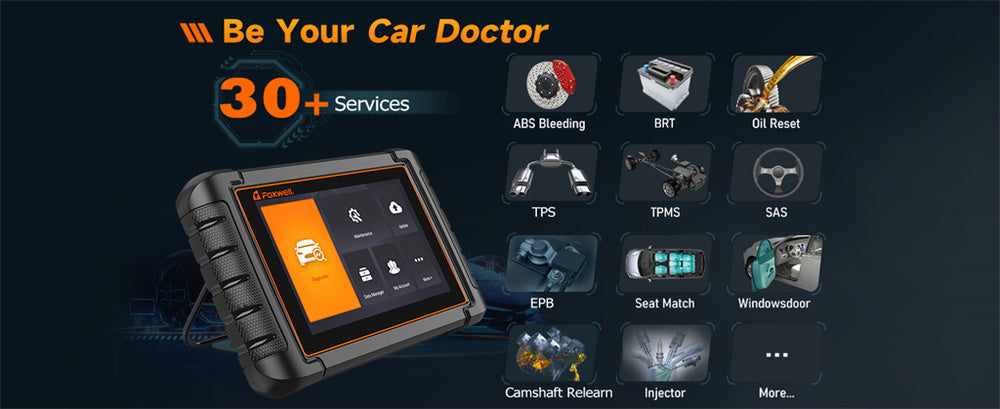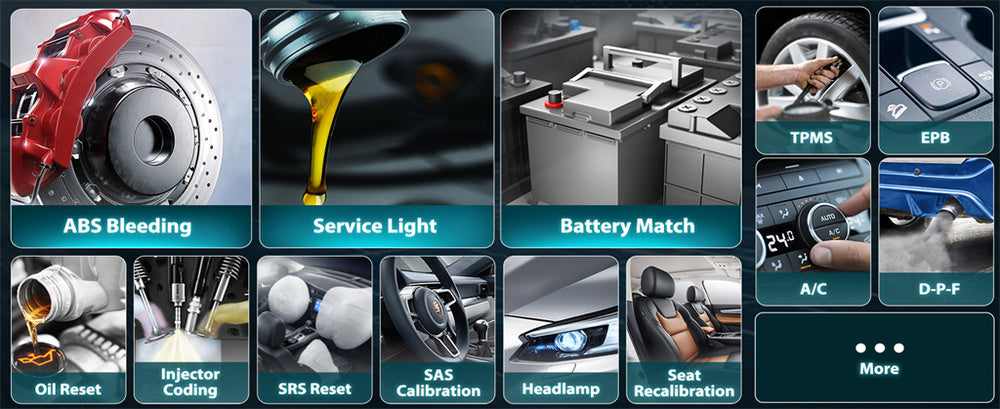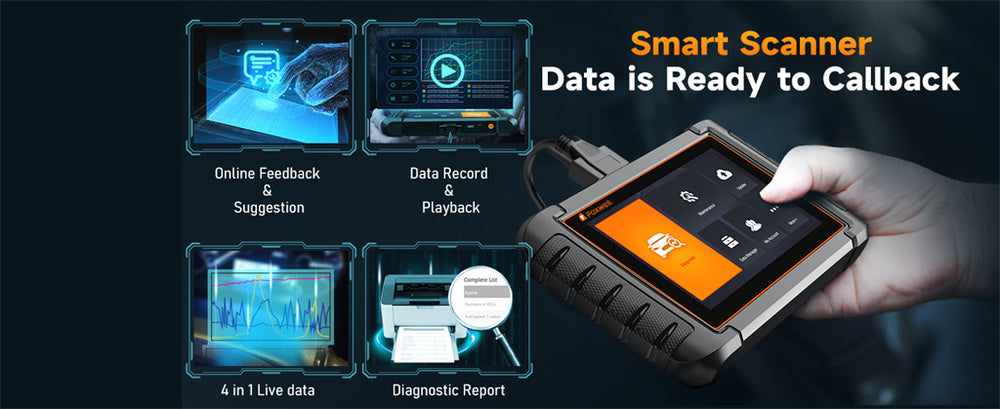Yes, you can leave your OBD2 scanner plugged in while you drive, but there are some factors to consider. OBD2 scanners, such as the Foxwell NT809BT, have become essential tools for car enthusiasts and professional mechanics alike. These handy devices offer a wealth of information about your vehicle's health, helping to diagnose issues and monitor performance. Let's dive into the details to understand the benefits and potential drawbacks of keeping your OBD2 scanner plugged in during your drives.
Why People Want to Leave OBD2 Scanners Plugged In

Leaving an OBD2 scanner plugged in while driving offers several advantages that cater to both practical needs and a desire for more detailed understanding of vehicle performance. Let’s explore the deeper reasons why many drivers choose to keep these devices connected.
Continuous Monitoring for Peace of Mind
One of the primary reasons drivers leave their OBD2 scanners plugged in is for the peace of mind that comes with continuous monitoring. For instance, if your car has a history of specific issues like overheating, having the OBD2 scanner constantly running allows you to keep an eye on critical parameters. This means you can take preventive action before minor issues escalate into major problems, such as pulling over when temperatures start to rise, rather than waiting for a warning light which might come too late.
Data Collection for Diagnostics
Real-time data collection is invaluable for diagnosing intermittent or elusive problems. Many vehicle issues do not manifest consistently and may only appear under specific conditions. By keeping the scanner plugged in, drivers can log data over a period of time, making it easier to identify patterns and triggers for certain faults. This logged data can be especially useful when consulting with a mechanic, providing them with a clearer picture of what might be going wrong and when.
Fuel Efficiency and Performance Optimization
Some drivers use the continuous data provided by OBD2 scanners to optimize their driving habits for better fuel efficiency and performance. By analyzing data such as throttle position, fuel consumption, and engine load, drivers can adjust their driving style to be more economical. This can lead to cost savings on fuel and reduce the overall wear and tear on the vehicle.
Immediate Fault Alerts
Another significant benefit is receiving immediate alerts for any fault codes or issues that arise. Instead of waiting for a check engine light to come on, which could mean the problem has been present for some time, an OBD2 scanner can notify the driver as soon as an issue is detected. This early warning system can prevent minor issues from becoming severe, potentially avoiding expensive repairs.
Enhanced Vehicle Customization
For enthusiasts who like to tweak and customize their vehicles, an OBD2 scanner can provide critical feedback on the changes they’ve made. Whether it’s aftermarket parts or performance tuning, the scanner helps ensure that modifications are performing as expected and not causing any harm to the vehicle.
Convenience and Accessibility
The convenience of having a plug-and-play device that doesn’t require frequent disconnection and reconnection is another reason drivers keep their scanners plugged in. Modern OBD2 scanners, especially Bluetooth-enabled ones like the Foxwell NT809BT, can be discreet and unobtrusive, connecting to smartphones or tablets to provide data in real time without cluttering the dashboard with additional equipment.
Long-Term Health Tracking
Just like with human health, keeping a long-term record of a vehicle’s health can be beneficial. Continuous monitoring allows for a comprehensive history of the vehicle’s performance and issues, which can be useful not only for maintenance but also for resale purposes. Prospective buyers often appreciate detailed maintenance records, which can be supported by data from an OBD2 scanner.
Pros of Leaving an OBD2 Scanner Plugged In
Access to Real-Time Diagnostics
Continuous access to data can help in early detection of potential problems. For instance, if you’re on a long road trip and your car starts acting up, with an OBD2 scanner plugged in, you can instantly check if it’s a minor sensor issue or something more serious that might require you to pull over. This immediate insight can save you from being stranded in the middle of nowhere or driving with a potentially serious problem.
Immediate Alerts
Receiving instant notifications about any issues allows for timely intervention. Imagine noticing a slight hesitation in your engine while driving; your OBD2 scanner immediately alerts you to a misfire. Even if the check engine light hasn’t turned on yet, you can address the problem before it escalates into something that might require costly repairs.
Enhanced Understanding
An OBD2 scanner helps drivers better understand their driving habits and vehicle performance, potentially improving fuel efficiency and reducing wear and tear. For example, you might discover that your fuel consumption increases significantly when you accelerate too quickly. By making a conscious effort to accelerate more smoothly, you can save on fuel and reduce the strain on your engine over time.
Cons of Leaving an OBD2 Scanner Plugged In
Battery Drain
If the vehicle is not driven regularly, the OBD2 scanner might drain the car's battery over time. Consider a scenario where someone only uses their car on weekends. They might find their battery drained because the OBD2 scanner remained plugged in all week, drawing power even when the car is off.
Risk of Distraction
Real-time data can be distracting if not managed properly, leading to unsafe driving conditions. For instance, a driver might be tempted to frequently glance at their phone to check the OBD2 data, which could lead to distraction and increase the risk of accidents. It’s crucial to use these tools responsibly and focus on driving safely.
Device Malfunction
There's always a risk of the OBD2 scanner malfunctioning or causing interference with the car's electronics. For example, if you try to run a full system scan while driving, you might experience a sudden loss of power steering or other critical functions, making it difficult to control the vehicle safely. Ensuring that the device is used appropriately and only for intended purposes can mitigate such risks.
What Do Experts Say?
Mechanics and automotive experts generally agree that while it's safe to leave an OBD2 scanner plugged in for short periods, prolonged use requires some caution. They emphasize the importance of understanding your specific vehicle and driving habits. Some experts suggest that for regular commuters who drive their vehicles daily, leaving the scanner plugged in can be beneficial for constant monitoring. However, for those who use their cars infrequently, the risk of battery drain becomes a significant concern.
Additionally, experts highlight the potential for distraction. They advise that drivers should not interact with the OBD2 scanner while driving, as it can divert attention from the road. Instead, they recommend checking the data only when the vehicle is stationary. Another expert opinion is that while most modern vehicles and high-quality scanners are designed to minimize interference, there’s always a slight risk of malfunction or data overload on the vehicle’s systems, especially if the scanner is outdated or of low quality.
Safety Precautions and Best Practices
To safely and effectively use an OBD2 scanner while driving, consider the following best practices:
Use Reliable Models: Invest in high-quality OBD2 scanners from reputable brands. Reliable models are less likely to cause interference with your vehicle's electronics and provide more accurate data.
Monitor Battery Health: Regularly check your car's battery health, especially if you plan to leave the scanner plugged in for extended periods. If you don't drive your car daily, consider unplugging the scanner when not in use to prevent battery drain.
Minimize Distraction: Avoid interacting with the scanner while driving. Use the data primarily when the vehicle is stationary, and if your scanner connects to a smartphone app, ensure notifications are non-intrusive.
Update Firmware and Software: Keep the OBD2 scanner’s firmware and any associated software up to date to benefit from the latest features and bug fixes, which can enhance compatibility and functionality.
Regular Maintenance Checks: Incorporate the data from your OBD2 scanner into your regular maintenance routine. Use it to track long-term vehicle health and address any recurring issues promptly.

Conclusion
Leaving your OBD2 scanner plugged in while driving can offer numerous benefits, from real-time diagnostics to immediate issue alerts. However, it also comes with potential downsides like battery drain and distraction. By following best practices and using reliable devices, you can enjoy the advantages of continuous vehicle monitoring without compromising safety. Always consider your specific driving habits and vehicle needs before deciding to keep your OBD2 scanner plugged in during your drives.
If you have any further questions or need more detailed advice, feel free to ask!
FAQs:
Is it safe to drive with an OBD2 scanner plugged in?
Yes, it is generally safe to drive with an OBD2 scanner plugged in as long as the device is functioning properly and not obstructing your driving.
Will leaving an OBD2 scanner plugged in drain my car battery?
Modern OBD2 scanners typically draw very little power and shouldn't drain your car battery significantly when the engine is running.
Can an OBD2 scanner cause any damage to my car?
No, an OBD2 scanner is designed to communicate with your car's systems without causing any damage. However, ensure it’s properly connected and used according to the manufacturer's instructions.




Leave a comment
This site is protected by hCaptcha and the hCaptcha Privacy Policy and Terms of Service apply.